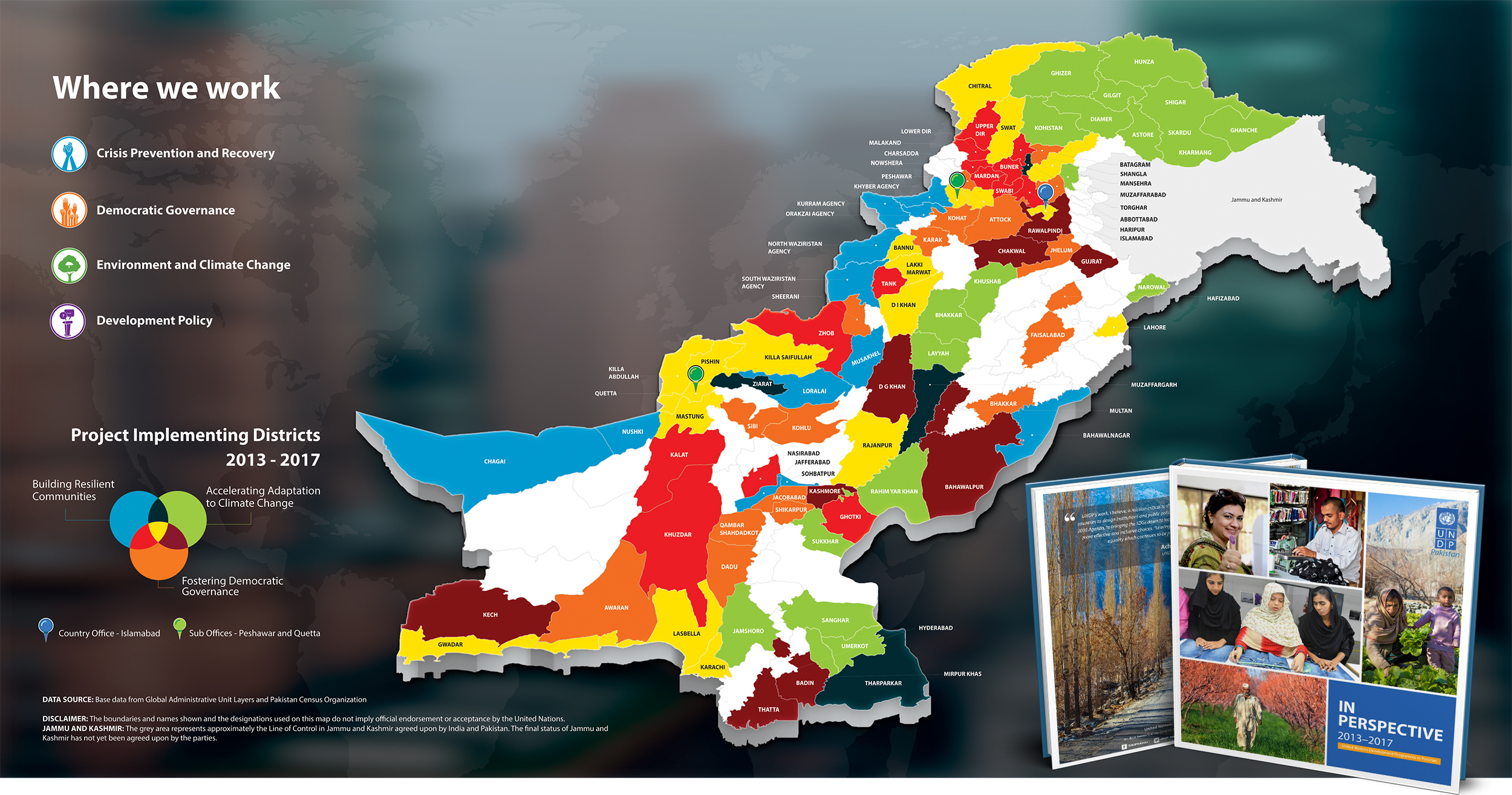In Perspective 2013–2017
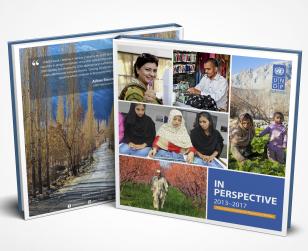
In Perspective 2013–2017
September 26, 2018
"In Perspective" highlights UNDP's achievements during 2013–2017. UNDP worked in more than 90 districts of Pakistan in four thematic areas.
UNDP's work, I believe, is mission critical to the SDGs and has different dimensions, from supporting countries to design institutions and public policies that take a systemic approach that is called for by the 2030 Agenda, to bringing the SDGs down to local authorities and people thereby enabling them to make more effective and inclusive choices. “Leaving no one behind” has many implications such as gender equality which continues to be progressively mainstreamed in all our work.
Achim Steiner
UNDP Administrator
STRENGTHENING DEMOCRATIC GOVERNANCE
Building transparent and accountable institutions, enhancing trust in services
Between 2013 and 2017, UNDP's support for democratic governance in Pakistan was informed by two major concerns: building institutions to enhance accountability, oversight and services following the first-ever democratic transition in 2013, and the need to strengthen rule of law in areas of FATA and KP affected by long-running insecurity.

BUILDING RESILIENT COMMUNITIES
Helping communities and institutions mitigate shocks and build a peaceful, cohesive Pakistan
In 2013–2017, UNDP supported communities as they recovered from displacement, insecurity, natural disaster and the burden of hosting thousands of temporarily displaced families and refugees. A recognition of the critical role of young people in building secure societies led to growing focus on empowerment through education, recreation, skills development and employability support. During this period, we also supported disaster preparedness by building national and local capacities in disaster risk management.
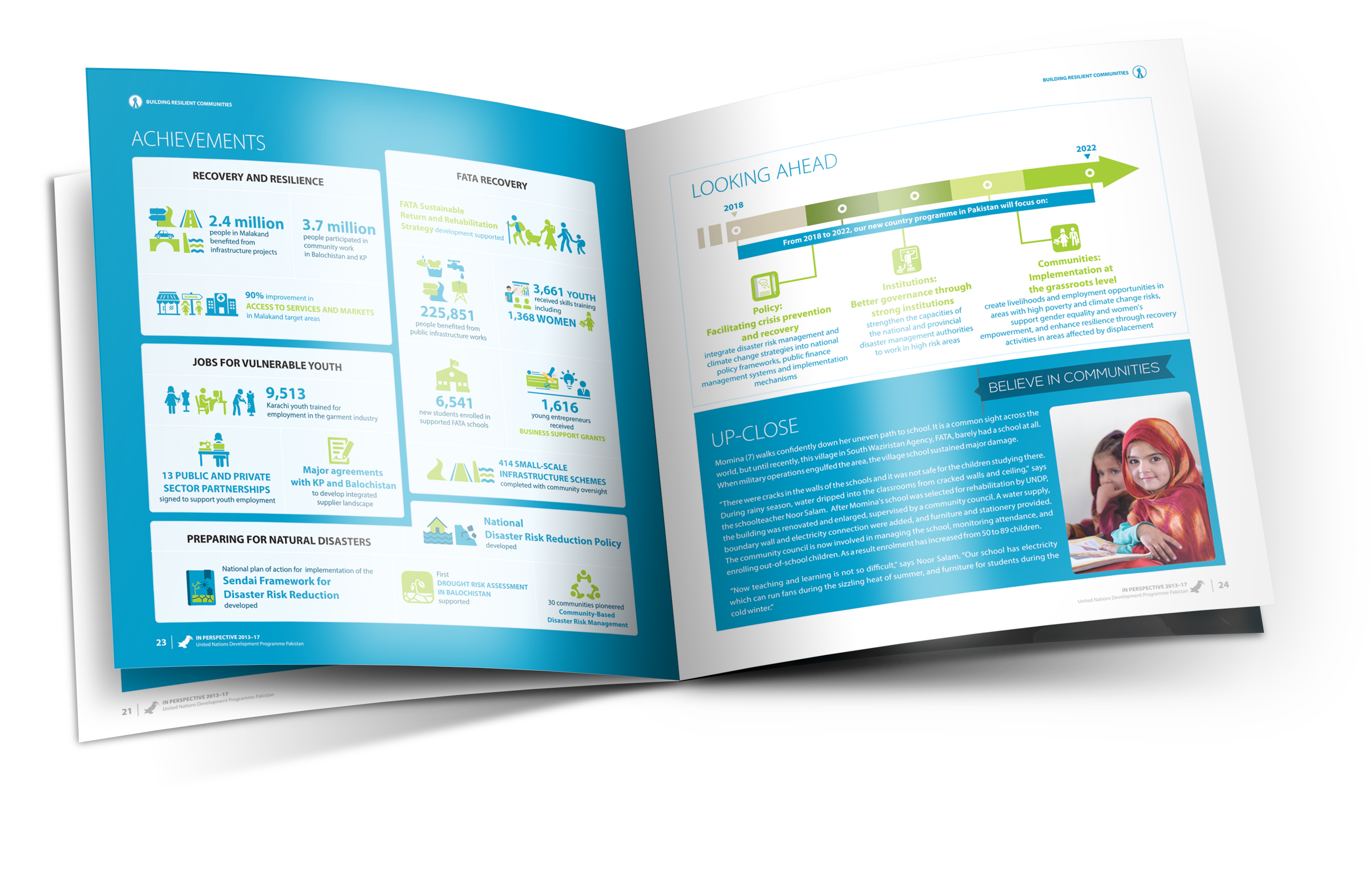
ACCELERATING ADAPTATION TO CLIMATE CHANGE
Protecting habitats and creating the foundation for a greener Pakistan
The devastating floods of 2010–2011 created widespread awareness of Pakistan's extreme vulnerability to climate change, and the urgent need for environmental protections. This understanding informed UNDP's work supporting environmental protection, sustainability and climate change action in Pakistan between 2013 and 2017.
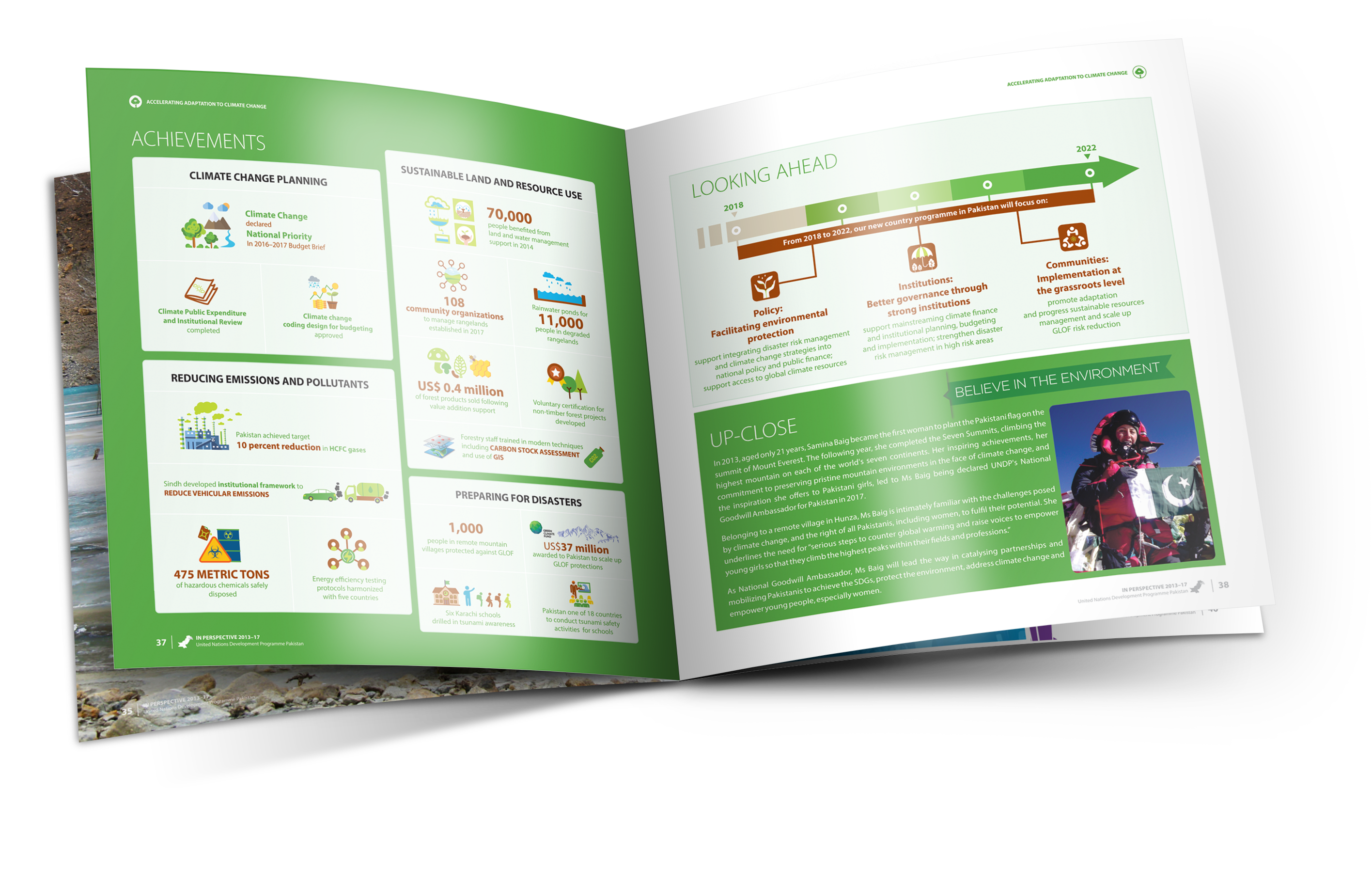
FOSTERING DEVELOPMENT DIALOGUE
Helping map Pakistan's journey towards sustainable development
The period between 2013 and 2017 covered the end of the 15-year effort to achieve the MDGs, and the start of its successor SDGs. UNDP partnered with Pakistan throughout this period to accelerate development efforts, learn from the lessons of the MDG era, manage a smooth transition, and implement a robust foundation for the achievement of the SDGs from 2015.
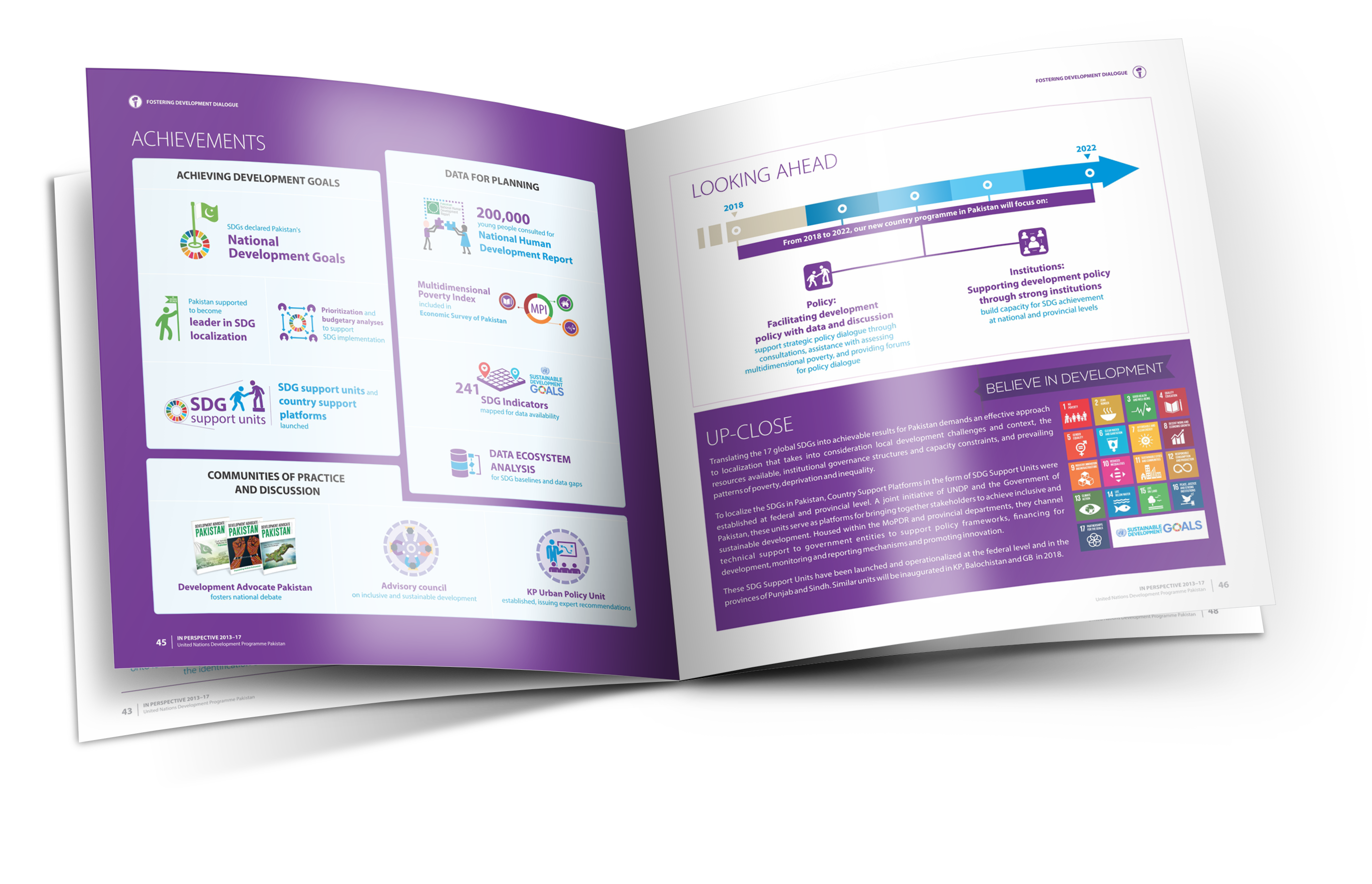
Looking ahead, our new country programme for 2018 to 2022, agreed with the Government of Pakistan and aligned with Vision 2025 and the One UN III Programme, responds to Pakistan's evolving context by focusing on two major outcome areas: increasing effectiveness and accountability of governance, and enhancing the resilience and socioeconomic development of communities. To this end, we will build on our flagship initiatives – e.g. supporting the SDGs, FATA reforms, rule of law and access to justice, youth empowerment, climate change, biodiversity conservation and disaster risk reduction – and will strengthen our support for women's empowerment and brokering South-South exchanges, including within the China-Pakistan Economic Corridor (CPEC). We are adopting a three-tiered approach to achieving our objectives: fostering an enabling environment in terms of legislation, policy and regulation; strengthening institutional capacity for innovation, sustainability, stabilization and high quality implementation; and supporting scalable community interventions that build local capacities and empower people. All of this will be underpinned in thorough research and analysis, such as National Human Development Reports and other studies, to propose policy options for decision-makers.
Read the full report below.

 Locations
Locations